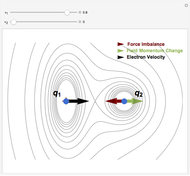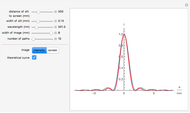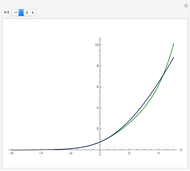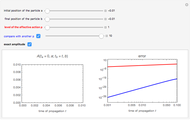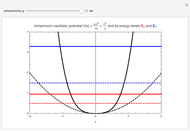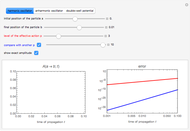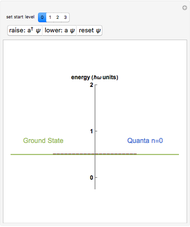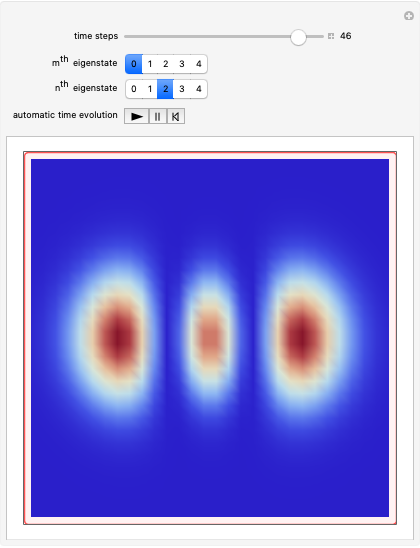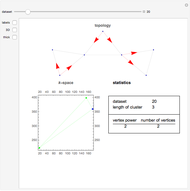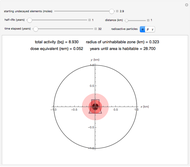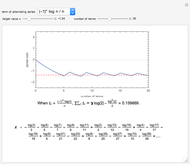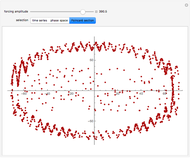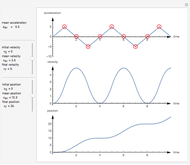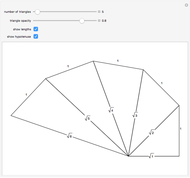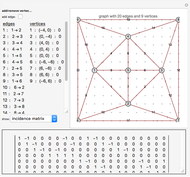Scalar Feynman Diagrams and Symanzik Polynomials

Requires a Wolfram Notebook System
Interact on desktop, mobile and cloud with the free Wolfram Player or other Wolfram Language products.
This Demonstration allows the construction of an arbitrary Feynman graph and displays its position space, momentum space, or parametrized amplitude. For simplicity, it assumes a Euclidean scalar field theory with dimensional regularization and only allows single powers of the propagators. External momenta can be toggled on and off and are always considered incoming. Edge contraction and deletion are available by clicking an edge in the left-hand panel. In particular, the sequence of two-loop propagator graphs in the bookmarks is obtained via successive edge contractions of the highest numbered edge.
[more]
Contributed by: Simon Tyler (March 2011)
Open content licensed under CC BY-NC-SA
Snapshots
Details
This Demonstration allows the construction of an arbitrary Feynman graph and displays its position space, momentum space, or parametrized amplitude. It assumes a Euclidean, scalar quantum field theory in  dimensions and that each propagator
dimensions and that each propagator  can have a different mass. Much of the Demonstration works for arbitrary graphs, but the most interesting are those that are connected and one-particle irreducible.
can have a different mass. Much of the Demonstration works for arbitrary graphs, but the most interesting are those that are connected and one-particle irreducible.
External propagators are not drawn in the graph; rather, vertices are flagged if they have incoming external momentum. The total external momentum is assumed to be conserved. Vertices are added and deleted by command-clicking in the vertex pane; they can be moved by clicking and dragging. Edges are added by activating the appropriate toggle, then clicking the two vertices to be joined. All other changes to the edges and vertices can be made in the popup menus of the left-hand panel. Information about the Feynman graphs selected in the lower left-hand menu and is displayed in the bottom pane. All graph data is printable from the supplied menus for use in other programs and calculations. Most objects in the Demonstration have tooltips describing their use.
Consider a graph  with
with  edges,
edges,  vertices, and
vertices, and  external edges connected to
external edges connected to  external vertices; the assumption that external vertices have only one external edge affects only the expression for the position-space amplitude but is easily remedied. Index the edges from
external vertices; the assumption that external vertices have only one external edge affects only the expression for the position-space amplitude but is easily remedied. Index the edges from  to
to  , where the final
, where the final  are the external edges. Similarly index the vertices. If we introduce the
are the external edges. Similarly index the vertices. If we introduce the  incidence matrix
incidence matrix  , then the Feynman amplitude associated with the graph is
, then the Feynman amplitude associated with the graph is
 .
.
Note that  , where
, where  and
and  are the beginning and ending points of the edge indexed by
are the beginning and ending points of the edge indexed by  .
.
Taking the Fourier transform and truncating the external propagators gives the corresponding momentum space amplitude
 .
.
The external momenta  are always considered as incoming and are associated with the external edge that is connected to the vertex at
are always considered as incoming and are associated with the external edge that is connected to the vertex at  . The
. The  -functions combine to give conservation of total external momentum (a factor of
-functions combine to give conservation of total external momentum (a factor of  ) and the rest can be integrated leaving (for a connected graph)
) and the rest can be integrated leaving (for a connected graph)  momentum integrals;
momentum integrals;  is the number of independent loops in the graph.
is the number of independent loops in the graph.
The momentum space amplitude can then be written in either Feynman parameters

or Schwinger parameters (also known as proper-time or  -parameters)
-parameters)
 ,
,
where  and
and  are the Symanzik polynomials. The first Symanzik polynomial (also known as the Kirchhoff–Symanzik polynomial) is homogeneous in
are the Symanzik polynomials. The first Symanzik polynomial (also known as the Kirchhoff–Symanzik polynomial) is homogeneous in  of order
of order  and can be written as a sum-product over the trees of the graph:
and can be written as a sum-product over the trees of the graph:  , where the
, where the  denote the edges. The second Symanzik polynomial is a quadratic form in the external momenta
denote the edges. The second Symanzik polynomial is a quadratic form in the external momenta  and is homogeneous in
and is homogeneous in  of order
of order  . It can be expanded over the two-trees (two-component spanning forests) of the graph:
. It can be expanded over the two-trees (two-component spanning forests) of the graph:  , where
, where  is the total momentum squared flowing into either of the connected components of the two-tree. Total momentum conservation means that it does not matter which component is chosen.
is the total momentum squared flowing into either of the connected components of the two-tree. Total momentum conservation means that it does not matter which component is chosen.
Some good references are
N. Nakanishi, Graph Theory and Feynman Integrals, Newark, NJ: Gordon and Breach, 1971.
V. A. Smirnov, Evaluating Feynman integrals, New York: Springer, 2004.
C. Itzykson and J.–B. Zuber, Quantum Field Theory, New York: McGraw–Hill, 1980.
Permanent Citation






